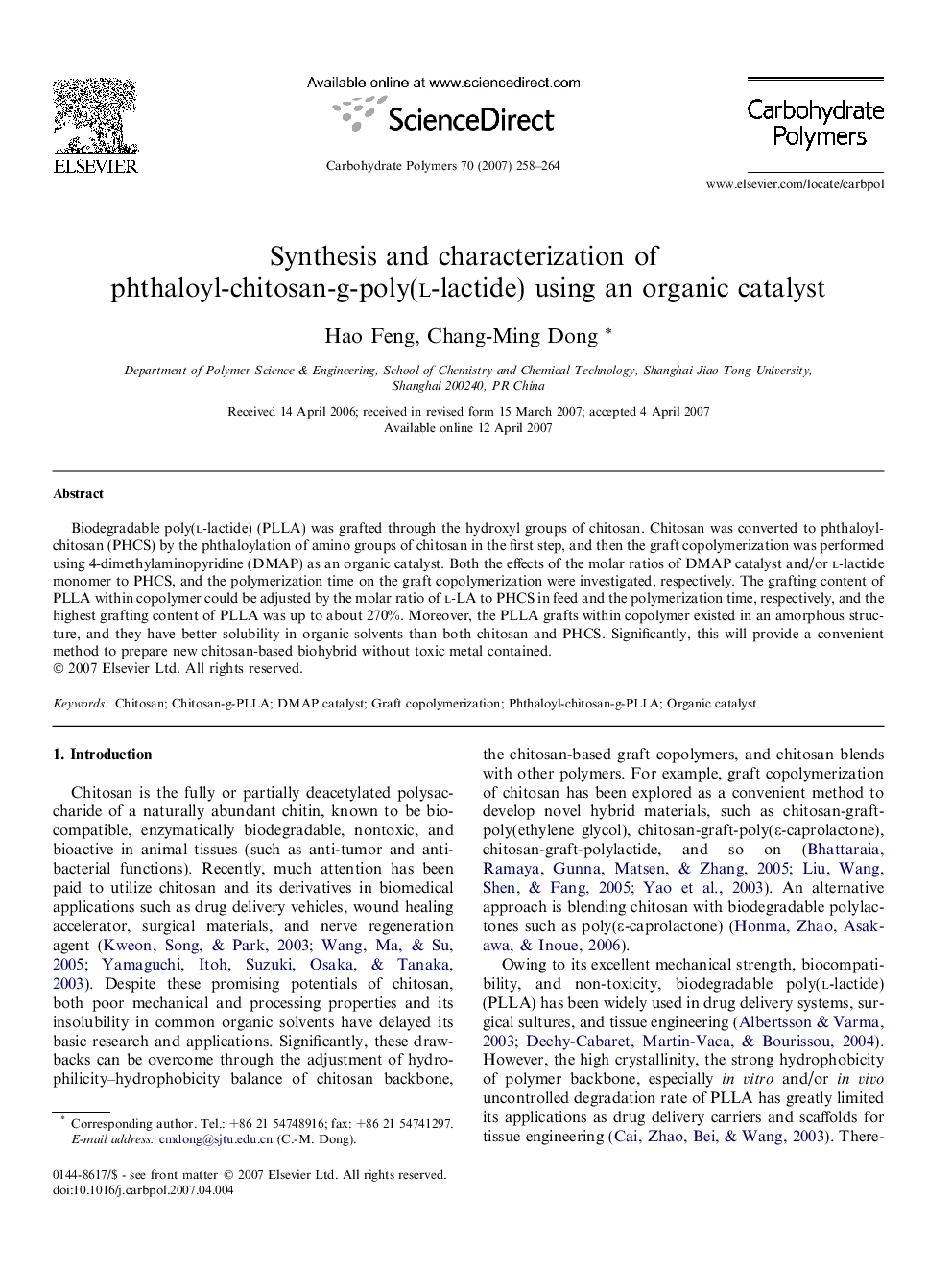| Article ID | Journal | Published Year | Pages | File Type |
|---|---|---|---|---|
| 1386638 | Carbohydrate Polymers | 2007 | 7 Pages |
Biodegradable poly(l-lactide) (PLLA) was grafted through the hydroxyl groups of chitosan. Chitosan was converted to phthaloyl-chitosan (PHCS) by the phthaloylation of amino groups of chitosan in the first step, and then the graft copolymerization was performed using 4-dimethylaminopyridine (DMAP) as an organic catalyst. Both the effects of the molar ratios of DMAP catalyst and/or l-lactide monomer to PHCS, and the polymerization time on the graft copolymerization were investigated, respectively. The grafting content of PLLA within copolymer could be adjusted by the molar ratio of l-LA to PHCS in feed and the polymerization time, respectively, and the highest grafting content of PLLA was up to about 270%. Moreover, the PLLA grafts within copolymer existed in an amorphous structure, and they have better solubility in organic solvents than both chitosan and PHCS. Significantly, this will provide a convenient method to prepare new chitosan-based biohybrid without toxic metal contained.
